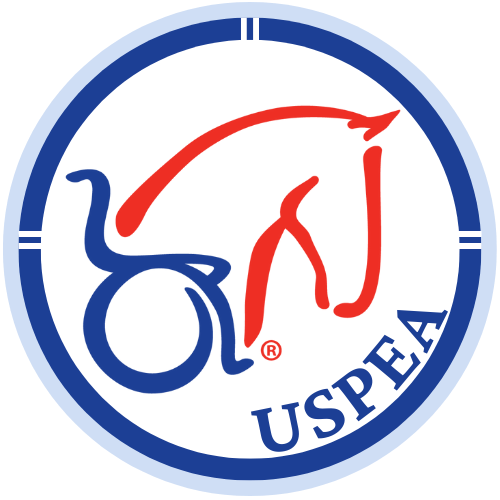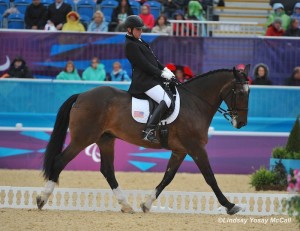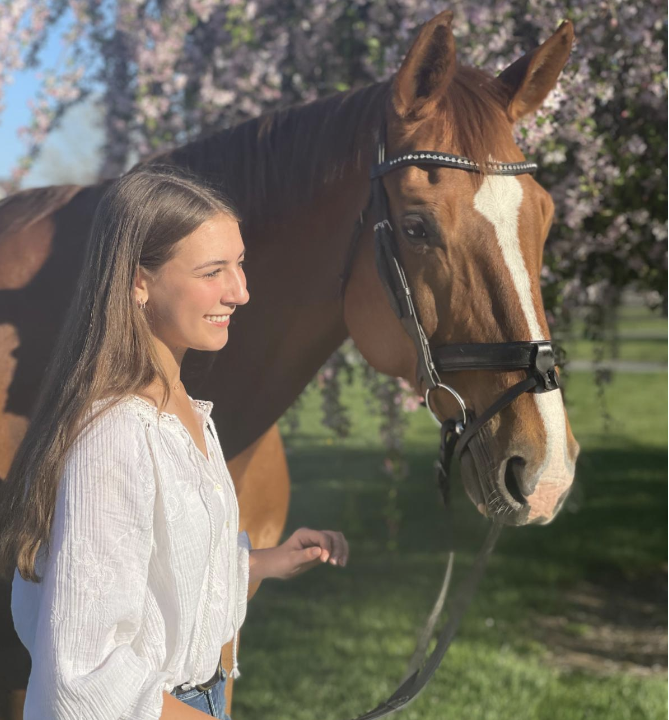Get Involved with the USPEA
January 4, 2011Recent Show Results
January 5, 2011Although a Para-Equestrian may participate in any discipline, the three disciplines currently recognized by the U.S. are Para-Dressage, Para-Driving, and Para-Reining. Para-Jumping has become more recognized around the world as popularity grows. During the Paralympics which occurs following the summer Olympics, the only discipline that competes is Para-Dressage. At the World Equestrian Games which also occurs every four years, Para-Dressage is the only Para-Equestrian discipline that currently competes at the Games. Riders are encourage to try all disciplines.
PARA-EQUESTRIAN DRESSAGE
Para-Equestrian Dressage is the only equestrian discipline that is included in the Paralympic Games, where it has been a regular fixture since 1996. With the idea of creating opportunities for all people with disabilities to compete and achieve their goals in equestrian sport, athletes are classified according to the level of their disability/impairment so as to provide for meaningful competition. In 2006, the Para-Equestrian sport joined the ranks of the other 7 disciplines regulated by the FEI, with national and international competitions for Dressage and Driving for individuals with a disability. This led to the FEI becoming the first, and still the only, International Federation to govern and regulate a sport for both the able bodied and disabled athletes.
2017 change in grade level names there is NO change to your previous classification
Grade 1a=Grade 1
Grade 1b=Grade 2
Grade II= Grade 3
Grade III= Grade 4
Grade IV=Grade 5
Grade V=Grade 6
How Para-Equestrian Grades relate to United States Dressage Federation levels:
• FEI PE Grade 1 is equivalent to Introductory Level.
• FEI PE Grade 2 is equivalent to Training Level
• FEI PE Grade 3 is equivalent to First Level.
• FEI PE Grade 4 is equivalent to Second Level.
• FEI PE Grade 5 is equivalent to Third Level.
Competition Venue and Testing
All rules and regulations with regards to competition venues and testing are governed by the same principles as other disciplines. The General Regulations, Statutes and Discipline rules that are available on this site apply. The formula for the shows is the same as for standard Dressage shows with Freestyle tests and also tests where the athletes follow a set program.
Classification
The competitor’s mobility, strength and coordination are assessed in order to establish their Classification Profile. People with similar functional ability Profiles are grouped into competition Grades. The Grades range from for the most severely impaired, to Grade IV for the least impaired. The competition within each Grade can therefore be judged on the skill of the individual competitor on their horse, regardless of the competitor’s disability.
Below are few documents that explain Classifications and the application process:
-Classification Manual
-Classifiers’ report
-Compensation aids document
-Application procedure to use Compensatory aids in FEI Dressage Competitions (CDIs)
Application procedure for Para Identity Card
Equipment
Competitors must wear the appropriate equipment as stipulated in the classification manual, and are only permitted the use of special equipment when this has been formally documented and approved.
The major event for Paralympic Dressage is the Paralympic Games. The Games are the second largest sporting event in the world after the Olympic Games. The Paralympics are contested immediately after the Olympics in the same city and venue.
PARA-EQUESTRIAN DRIVING
“Horses were driven long before they were ridden. As vehicles have eliminated the need for horses as a primary form of transportation, Driving has turned into a fast-growing sports discipline”
Para-Equestrian Driving has been governed by the FEI since 2006 and has now fully joined the ranks of the other 7 FEI disciplines with national and international competitions in Driving for individuals with a disability. This led to the FEI becoming the first, and still the only, International Federation to govern and regulate a sport for both the able bodied and disabled athletes. Driving is a discipline without riders; instead drivers sit on a vehicle drawn by a single horse or pony, a pair or a team of four.
Competition Venue and Testing
All rules and regulations with regards to competition venues and testing are governed by the same principles as other disciplines. The General Regulations, Statutes and Discipline rules that are available on this site apply. The formula for the shows is the same as for standard Driving with Dressage, Marathon, Cones/Obstacles phases.
Classification
With the idea of creating opportunities for all people with disabilities to compete and achieve their goals in equestrian sport, athletes are classified according to the level of their disability/impairment so as to provide for meaningful competition. The competitor’s mobility, strength and coordination are assessed in order to establish their Classification Profile. People with similar functional ability Profiles are grouped into competition Grades. The competition within each Grade can therefore be judged on the skill of the individual competitor on their horse, regardless of the competitor’s disability.
Equipment
Competitors must wear the appropriate equipment as stipulated in the classification manual, and are only permitted the use of special equipment when this has been formally documented and approved.
Main competitions
FEI World & Continental Championships
The excerpts above are courtesy and copyright of www.FEI.org. at http://www.fei.org/disciplines/dressage/about-para-equestrian-dressage


